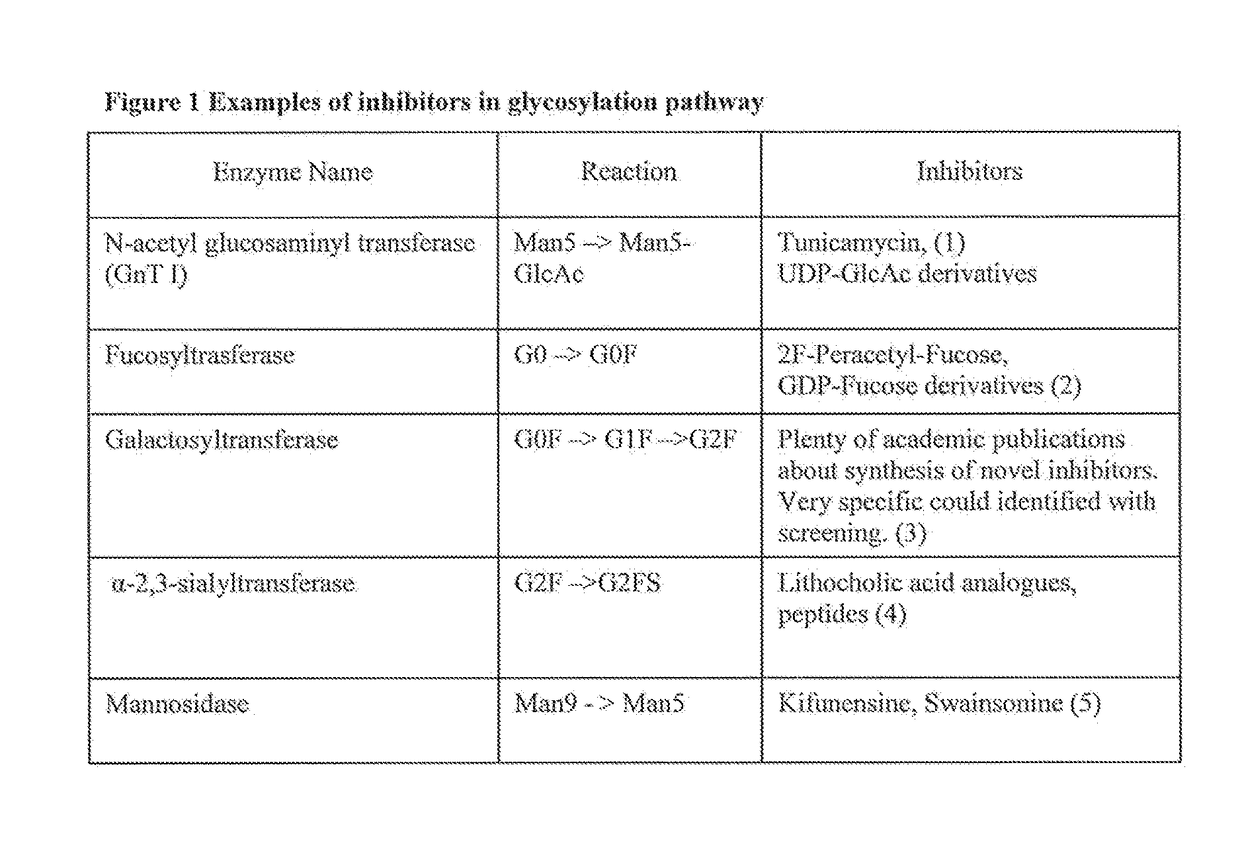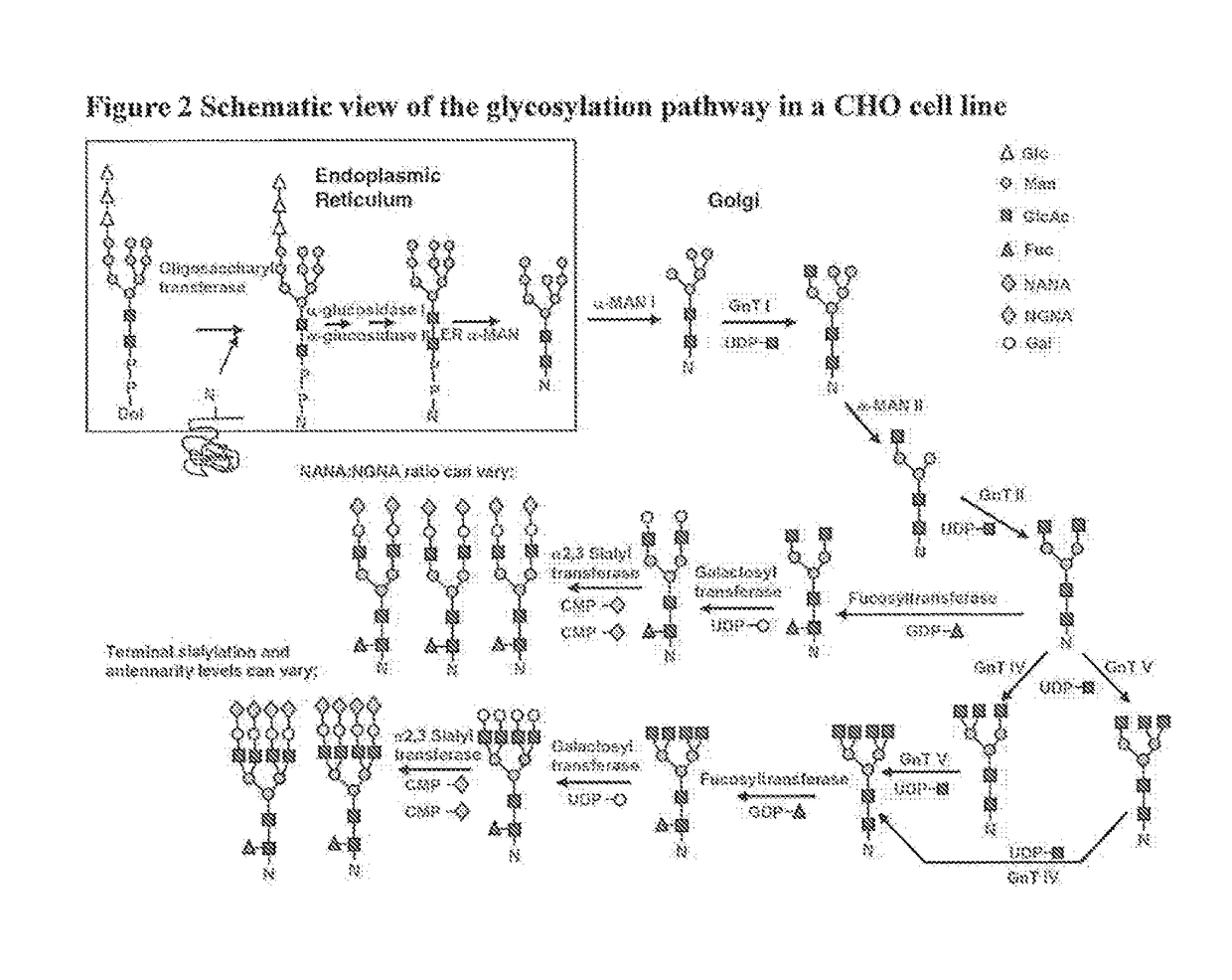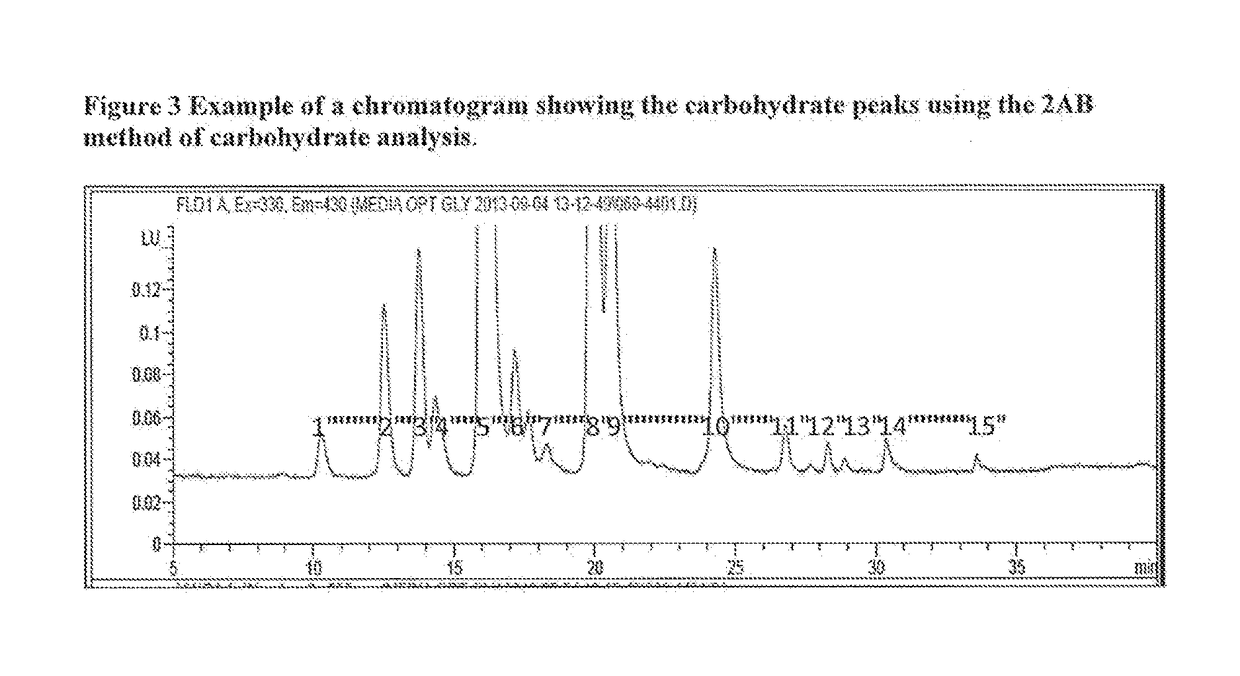Method for optimizing post-translational modifications on recombinant proteins
a technology of recombinant proteins and post-translational modifications, which is applied in the direction of genetically modified cells, instruments, peptides, etc., can solve the problems of complex production of recombinant proteins in cell culture, difficult control of ptms, and known safety risks, so as to reduce or augment the activity of specific host proteins
- Summary
- Abstract
- Description
- Claims
- Application Information
AI Technical Summary
Benefits of technology
Problems solved by technology
Method used
Image
Examples
example 1
Setting Target Posttranslational Modifications
[0075]This example demonstrates one method for identifying target PTMs for development of a recipe for production of a recombinant protein. In order to identify target PTMs, 3-5 batches of the original reference product should be examined for the type and the amount of specific PTMs. For biosimilar development a reference is defined as reference product. For a process change, a reference is defined as one batch of the reference standard and an additional 4 batches of the product made using the original process. In the example below to set target PTMs for biosimilar development, 5 batches of the reference product were analyzed for PTMs. Out of 14 PTMs, two PTMs (glycosylation—G0 and glycosylation G2 were not observed. Other PTMs were measured and are shown in Table 1 to be present at different levels on different batches. To set the target PTMs, first the exact measurements for each PTM are identified for all five batches 1-5. For example...
example 2
A Recipe for Biosimilar of Herceptin® With a Similar Glycosylation PTMS
[0077]This example demonstrates one method to obtain a recipe for making a biosimilar of Herceptin® focusing on optimization of the glycosylation pattern. Herceptin® (INN:Trastuzumab) is a humanized monoclonal antibody directed against the external domain of the human HER2. The antibody is an IgG1, consisting of two γ1 heavy chains, two κ chains, and a single complex-type biantennary N-linked glycan at Asn300 of the heavy chain. For the purpose of this example Herceptin® (INN: trastuzumab) is a reference product. Five different batches of Herceptin® were analyzed for glycosylation pattern using 2AB glycan labeling method and the results are shown in Table 2. Since the PTM identity for some chromatography peaks remains unknown, not all peaks could be assigned to specific glycan PTMs. Therefore, PTMs have been labeled using peak numbers. An example of a chromatogram showing the glycan peaks representing different P...
PUM
| Property | Measurement | Unit |
|---|---|---|
| concentration | aaaaa | aaaaa |
| concentrations | aaaaa | aaaaa |
| α- | aaaaa | aaaaa |
Abstract
Description
Claims
Application Information
 Login to View More
Login to View More - R&D
- Intellectual Property
- Life Sciences
- Materials
- Tech Scout
- Unparalleled Data Quality
- Higher Quality Content
- 60% Fewer Hallucinations
Browse by: Latest US Patents, China's latest patents, Technical Efficacy Thesaurus, Application Domain, Technology Topic, Popular Technical Reports.
© 2025 PatSnap. All rights reserved.Legal|Privacy policy|Modern Slavery Act Transparency Statement|Sitemap|About US| Contact US: help@patsnap.com



